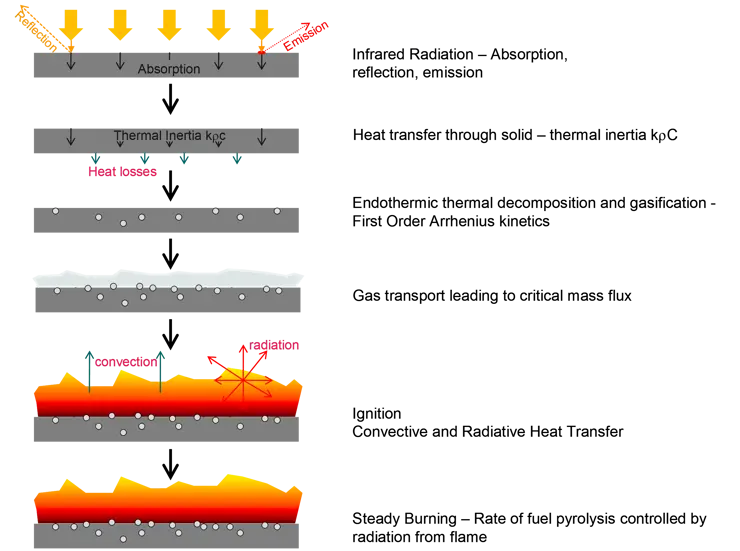Condensed phase fuel production, which plays a pivotal role in fire growth, has become an increasingly large research area in the last decade, resulting in the development of numerical models of pyrolysis incorporating complex arrays of physical and chemical processes.
A numerical pyrolysis model ThermaKin can be used to determine the relationships between the fundamental physical and chemical properties of polymeric materials and their gasification behaviour. The ThermaKin modeling environment is used by us to extract thermo- physical property values from experimental data and is ultimately used to construct a one-dimensional model to predict the results for example of the cone calorimeter or thermogravimetry tests.

The processes modelled by ThermaKin are shown above. Radiant heat produced by the cone calorimeter, is absorbed, emitted and reflected, and the condensed phase heat transfer process is modelled through the solid. The temperature increases which in result drive the endothermic decomposition processes which lead to the gasification of volatile fuel components. When a critical mass flux for ignition is reached, ignition will occur, and the incident heat flux is added to by the radiation produced by the flame. Therefore, quasi-steady state conditions pertain, until the sample is so thin that it has no more capacity to absorb heat, and the rate of pyrolysis increases.
The outputs of the ThermaKin model allow for numerical differentiation of the material’s mass versus time to obtain a mass loss rate. This, multiplied by the heat of combustion of the polymer being studied can produce a heat release rate for the material.
